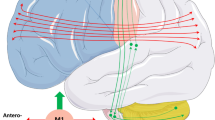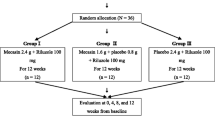Abstract
Purpose of review
Primary lateral sclerosis is a progressive neurodegenerative process that primarily affects upper motor neuron and presents with progressive stiffness and spasticity in all muscle groups. Given its rarity, diagnosis can be difficult and there has been limited research into what the best treatment is. This review will work to summarize the current available knowledge on the management of primary lateral sclerosis (PLS) including medications, nonpharmacologic interventions, diet, and exercise.
Recent findings
There have been no controlled studies of therapies in PLS. Management decisions are based on expert opinion from trials of other motor neuron diseases. The disease, while not curable, is treatable. A treatment plan will involve a mixture of medications, nonpharmacologic interventions, and exercise. The plan should be specific for each individual’s disabilities and not a one size fits all plan. Multidisciplinary centers with specialists trained in PLS can help to develop a plan. Research into the best practices and new treatments can have the potential to improve function.
Summary
While there is no cure for PLS, there are treatments for PLS. Therapy should involve an individualized care plan involving a mixture of treatment options developed and maintained through a multidisciplinary service and science hub model.
Similar content being viewed by others
References and Recommended Reading
Papers of particular interest, published recently, have been highlighted as: • Of importance •• Of major importance
Pringle CE, Hudson AJ, Munoz DG, Kiernan JA, Brown WF, Ebers GC. Primary lateral sclerosis. Clinical features, neuropathology and diagnostic criteria. Brain. 1992;115(Pt 2):495–520.
Wais V, Rosenbohm A, Petri S, Kollewe K, Hermann A, Storch A, et al. The concept and diagnostic criteria of primary lateral sclerosis. Acta Neurol Scand. 2017;136(3):204–11.
Mitsumoto H, Nagy PL, Gennings C, Murphy J, Andrews H, Goetz R, et al. Phenotypic and molecular analyses of primary lateral sclerosis. Neurol Genet. 2015;1(1):e3.
Statland JM, Barohn RJ, Dimachkie MM, Floeter MK, Mitsumoto H. Primary lateral sclerosis. Neurol Clin. 2015;33(4):749–60.
• Turner M, Barohn B, Corcia P, Fink J, Harms M, Kiernan M, et al. Delegates of the 2nd International PLS Conference. Primary lateral sclerosis: consensus diagnostic criteria. J Neurol Neurosurg Psychiatry. 2020;91(4):373–7 This reflects a consensus on the current state of knowledge on PLS with clinical features, EMG, and criteria for diagnosis.
•• Okun MS, Ramirez-Zamora A, Foote KD. Neuromedicine service and science hub model. JAMA Neurol. 2018;75(3):271–2 A description of the ideal model for comprehensive care.
Paganoni S, Deng J, Jaffa M, Cudkowicz ME, Wills AM. Body mass index, not dyslipidemia, is an independent predictor of survival in amyotrophic lateral sclerosis. Muscle Nerve. 2011;44:20–4.
Fitzgerald KC, O’Reilly ÉJ, Fondell E, Falcone GJ, McCullough ML, Park Y, et al. Intakes of vitamin C and carotenoids and risk of amyotrophic lateral sclerosis: pooled results from 5 cohort studies. Ann Neurol. 2013;73(2):236–45.
Andrews JA, Paganoni S, Braastad C, Cudkowicz M, Atassi N. Disease burden in upper motor neuron syndromes: a survey of patient perspectives. J Clin Neuromuscul Dis. 2014;16(2):104–5.
Keenan E. Spasticity management, part 2: choosing the right medication to suit the individual. Br J Neurosci Nurs. 2009;5:419–24.
Simon O, Yelnik AP. Managing spasticity with drugs. Eur J Phys Rehabil Med. 2010;46:401–10.
Brashear A, Lambeth K. Spasticity. Curr Treat Options Neurol. 2009;11:153–61.
Rabchevsky AG, Kitzman PH. Latest approaches for the treatment of spasticity and autonomic dysreflexia in chronic spinal cord injury. Neurotherapeutics. 2011;8:274–82.
Bedlack RS, et al. Pastula DM, Hawes J, Heydt D. Open-label pilot trial of levetiracetam for cramps and spasticity in patients with motor neuron disease. Amyotroph Lateral Scler. 2009;10(4):210–5.
Marvulli R, Megna M, Citraro A, Vacca E, Napolitano M, Gallo G, et al. Botulinum toxin type A and physiotherapy in spasticity of the lower limbs due to amyotrophic lateral sclerosis. Toxins (Basel). 2019;11(7).
• Jackson CE, McVey AL, Rudnicki S, Dimachkie MM, Barohn RJ. Symptom management and end-of-life care in amyotrophic lateral sclerosis. Neurol Clin. 2015;33(4):889–908 While focused on ALS, this presents a summary of treatment options in 2015.
Fralick M, Sacks CA, Kesselheim AS. Assessment of use of combined dextromethorphan and quinidine in patients with dementia or Parkinson disease after US Food and Drug Administration approval for pseudobulbar affect. JAMA Intern Med. 2019;179(2):224–30.
Odachi K, Narita Y, Machino Y, et al. Efficacy of transdermal scopolamine for sialorrhea in patients with amyotrophic lateral sclerosis. Cogent Med. 2017;4:1365401.
Garuti G, Rao F, Ribuffo V, Sansone VA. Sialorrhea in patients with ALS: current treatment options. Degener Neurol Neuromuscul Dis. 2019;9:19–26.
Chen SY, Ravindran G, Zhang Q, Kisely S, Siskind D. Treatment strategies for clozapine-induced sialorrhea: a systematic review and meta-analysis. CNS Drugs. 2019;33(3):225–38.
Banfi P, Ticozzi N, Lax A, Guidugli GA, Nicolini A, Silani VA. Review of options for treating sialorrhea in amyotrophic lateral sclerosis. Respir Care. 2015;60(3):446–54.
Forshew D, Bromber MA. survey of clinicians’ practice in the symptomatic treatment of ALS. Amyotroph Lateral Scler Other Motor Neuron Disord. 2003;4:258–63.
Pellegrini A, Lunetta C, Ferrarese C, et al. Sialorrhoea: how to manage a frequent complication of motor neuron disease. EMJ Neurol. 2015;3:107.
Stokholm MG, Bisgård C, Vilholm OJ. Safety and administration of treatment with botulinum neurotoxin for sialorrhoea in ALS patients: review of the literature and a proposal for tailored treatment. Amyotroph Lat Scl Fr. 2013;14:516–20.
Guidubaldi A, Fasano A, Ialongo T, Piano C, Pompili M, Mascianà R, et al. Botulinum toxin A versus B in sialorrhea: a prospective, randomized, double-blind, crossover pilot study in patients with amyotrophic lateral sclerosis or Parkinson’s disease. Mov Disord. 2011;26(2):313–9. https://doi.org/10.1002/mds.23473.
Jost WH, Friedman A, Michel O, et al. SIAXI: placebo-controlled, randomized, double-blind study of incobotulinumtoxin A for sialorrhea. Neurology. 2019;92(17):e1982–91.
Jackson CE, Gronseth G, Rosenfeld J, et al. Randomized double-blind study of botulinum toxin type B for sialorrhea in ALS patients. Muscle Nerve. 2009;39:137–43.
Jackson CE, Gronseth G, Rosenfeld J, et al. Muscle Study Group. Randomized double-blind study of botulinum toxin type B for sialorrhea in ALS patients. Muscle Nerve. 2009;39(2):137–43.
Assoulinr A, Levy A, Abelnour-Bedlnour-Mallet M, et al. Radiation therapy for hypersalivation: a prospective study in 50 amyotrophic lateral sclerosis patients. Int J Radiat Oncol Biol Phys. 2014;88:589–95.
Hawkey NM, Zaorsky NG, Galloway TJ. The role of radiation therapy in the management of sialorrhea: a systematic review. Laryngoscope. 2016;126(1):80–5. https://doi.org/10.1002/lary.25444.
Marquardt G, Seifert V. Use of intrathecal baclofen for treatment of spasticity in amyotrophic lateral sclerosis. J Neurol Neurosurg Psychiatry. 2002;72(2):275–6. https://doi.org/10.1136/jnnp.72.2.275.
Zubair A, Raymond M, Patwa H. Utility of intrathecal baclofen pump in primary lateral sclerosis. Neurology. 2018;90(15 Supplement):P3.429.
Schmidtko A, Lötsch J, Freynhagen R, Geisslinger G. Ziconotide for treatment of severe chronic pain. Lancet. 2010;375:1569–77.
Zhu X, Kohan LR, Goldstein RB. Low-dose intrathecal ziconotide for spasticity from primary lateral sclerosis: a case report. A A Pract. 2019;13(1):31–3.
• Paganoni S, Karam C, Joyce N, Bedlack R, Carter G. Comprehensive rehabilitative care across the spectrum of amyotrophic lateral sclerosis. NeuroRehabilitation. 2015;37(1):53–68 While focused on ALS, this describes the importance of comprehensive rehabilitation.
Miller RG, Jackson CE, Kasarskis EJ, England JD, Forshew D, Johnston W, et al. Quality Standards Subcommittee of the American Academy of Neurology. Practice parameter update: the care of the patient with amyotrophic lateral sclerosis: multidisciplinary care, symptom management, and cognitive/behavioral impairment (an evidence-based review): report of the Quality Standards Subcommittee of the American Academy of Neurology. Neurology. 2009;73(15):1227–33.
Dal Bello-Haas V, Florence J. Therapeutic exercise for people with amyotrophic lateral sclerosis or motor neuron disease. Cochrane Database Syst Rev. 2013May;2013(5):CD005229.
Tsitkanou S, Della Gatta P, Foletta V, Russell A. The role of exercise as a non-pharmacological therapeutic approach for amyotrophic lateral sclerosis: beneficial or detrimental? Front Neurol. 2019;10:783.
Gordon T, English AW. Strategies to promote peripheral nerve regeneration: electrical stimulation and/or exercise. Eur J Neurosci. 2016;43(3):336–50.
Arbesman M, Sheard K. Systematic review of the effectiveness of occupational therapy–related interventions for people with amyotrophic lateral sclerosis. Amer J Occ Ther. 2014;68:20–6.
Maresca G, Pranio F, Naro A, De Luca R, Maggio MG, Scarcella I, et al. Augmentative and alternative communication improves quality of life in the early stages of amyotrophic lateral sclerosis. Funct Neurol. 2019;34(1):35–43.
McNaughton D, Giambalvo F, Kohler K, Nazareth G, Caron J, Fager S. “Augmentative and alternative communication (AAC) will give you a voice”: key practices in AAC assessment and intervention as described by persons with amyotrophic lateral sclerosis. Semin Speech Lang. 2018Nov;39(5):399–415.
Tartaglia MC, Rowe A, Findlater K, Orange JB, Grace G, Strong MJ. Differentiation between primary lateral sclerosis and amyotrophic lateral sclerosis: examination of symptoms and signs at disease onset and during follow-up. Arch Neurol. 2007;64(2):232–6.
Tabor, Gaziano L, Watts J, Robison SR, Plowman EK. Defining swallowing-related quality of life profiles in individuals with amyotrophic lateral sclerosis. Dysphagia. 2016;31(3):376–82.
Plowman EK, Tabor-Gray L, Rosado KM, Vasilopoulos T, Robison R, Chapin JL, et al. Impact of expiratory strength training in amyotrophic lateral sclerosis: Results of a randomized, sham-controlled trial. Muscle Nerve. 2019;59(1):40–6.
Giacoppo S, Mazzon E. Can cannabinoids be a potential therapeutic tool in amyotrophic lateral sclerosis? Neural Regen Res. 2016;11(12):1896–9. https://doi.org/10.4103/1673-5374.197125.
Riva N, Mora G, Sorarù G, Lunetta C, Ferraro OE, Falzone Y, et al. CANALS Study Group. Safety and efficacy of nabiximols on spasticity symptoms in patients with motor neuron disease (CANALS): a multicenter, double-blind, randomized, placebo-controlled, phase 2 trial. Lancet Neurol. 2019;18(2):155–64.
Meyer T, Funke A, Münch C, et al. Real world experience of patients with amyotrophic lateral sclerosis (ALS) in the treatment of spasticity using tetrahydrocannabinol: cannabidiol (THC:CBD). BMC Neurol. 2019;19(1):222.Published 2019 Sep 7. https://doi.org/10.1186/s12883-019-1443-y.
Kwan JY, Jeong SY, Van Gelderen P, Deng HX, Quezado MM, Danielian LE, et al. Iron accumulation in deep cortical layers accounts for MRI signal abnormalities in ALS: correlating 7 tesla MRI and pathology. PLoS One. 2012;7(4):e35241.
Kwan JY, Meoded A, Danielian LE, Wu T, Floeter MK. Structural imaging differences and longitudinal changes in primary lateral sclerosis and amyotrophic lateral sclerosis. Neuroimage Clin. 2012;2:151–60.
Oba H, Araki T, Ohtomo K, Monzawa S, Uchiyama G, Koizumi K, et al. Amyotrophic lateral sclerosis: T2 shortening in motor cortex at MR imaging. Radiology. 1993;189(3):843–6.
Eisen A, Shytbel W, Murphy K, Hoirch M. Cortical magnetic stimulation in amyotrophic lateral sclerosis. Muscle Nerve. 1990;13(2):146–51.
Huynh W, Dharmadasa T, Vucic S, Kiernan MC. Functional biomarkers for amyotrophic lateral sclerosis. Front Neurol. 2018;9:1141.
Geevasinga N, Menon P, Sue CM, Kumar KR, Ng K, Yiannikas C, et al. Cortical excitability changes distinguish the motor neuron disease phenotypes from hereditary spastic paraplegia. Eur J Neurol. 2015;22(5):826–31e57–8.
Magistris MR, Rosler KM. The triple stimulation technique to study corticospinal conduction. Suppl Clin Neurophysiol. 2003;56:24–32.
Magistris MR, Rosler KM, Truffert A, Landis T, Hess CW. A clinical study of motor evoked potentials using a triple stimulation technique. Brain. 1999;122(Pt2):265–79.
Author information
Authors and Affiliations
Corresponding author
Ethics declarations
Conflict of Interest
JPW and DJL report support from Acorda pharmaceuticals with study medication only for a trial of dalfampridine in primary lateral sclerosis. No other potential conflicts of interest relevant to this article are reported.
Additional information
Publisher’s Note
Springer Nature remains neutral with regard to jurisdictional claims in published maps and institutional affiliations.
This article is part of the Topical Collection on Neuromuscular Disorders
Rights and permissions
About this article
Cite this article
Zhao, C., Lange, D.J. & Wymer, J.P. Management of Primary Lateral Sclerosis. Curr Treat Options Neurol 22, 31 (2020). https://doi.org/10.1007/s11940-020-00640-6
Published:
DOI: https://doi.org/10.1007/s11940-020-00640-6




